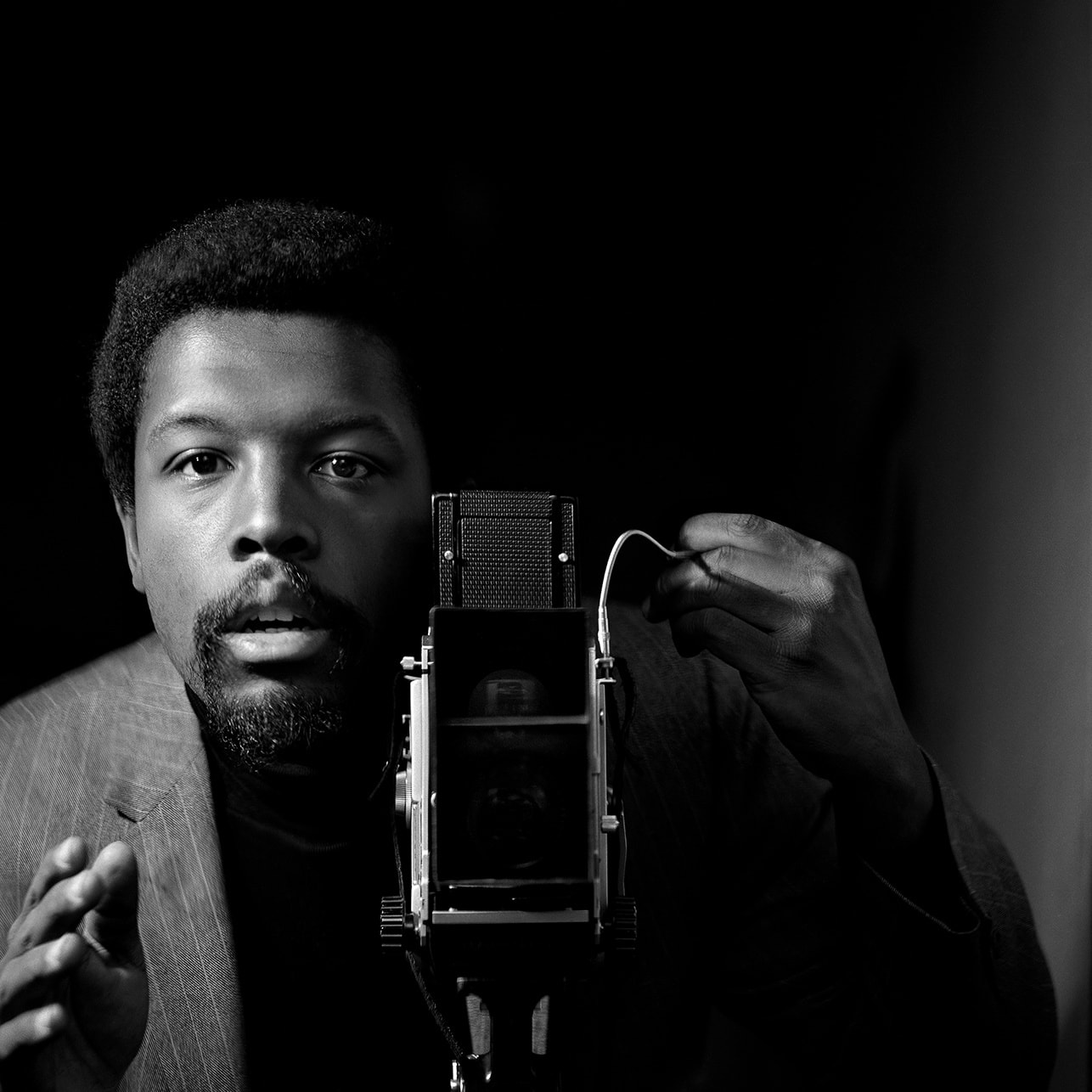At its peak, Black Tumblr was unbeatable. It served a continual dose of contemporary and archival images of black celebrities and strangers alike, an antidote to the mostly white artistic canon that extended on the website.
Photographs of activists and authors circulated with quotes of their work and facts from their lives. Each of Lil’ Kim’s four color-coordinated looks from the “Crush On You” video appeared neatly screenshotted and catalogued. In 2015, Black Tumblr users even organized a #blackoutday, urging their peers to upload selfies and flood the platform with faces of black folks.
I can clearly recall first coming across Kwame Brathwaite’s photograph of his wife Sikolo Brathwaite between Tumblr’s dark blue borders. That same image, at a much more lavish scale than my computer screen allows, was the first to greet me at the Museum of the African Diaspora’s current exhibit Black is Beautiful: The Photography of Kwame Brathwaite. The retrospective, organized by New York’s Aperture Foundation, features photographs, posters and other ephemera from the 81-year-old photographer’s universe in the late 1950s and 60s—a time when black nationalist thought prevailed in cities across the United States.
In that introductory photograph, Sikolo, who was a frequent model for Brathwaite, wears an intricate beaded headpiece, made by designer Carolee Prince, that dangles above her head like a frozen fountain. Against a tan background, her dark brown skin glows. And though she’s looking down, her chin is lifted regally. Hers is a beauty that does what we dream beauty can do: it stuns you, empties your head of other thoughts, and imprints itself in your memory.
Brathwaite’s photography was part of a larger campaign he led with his brother Elombe Brath through the artist collective, African Jazz-Art Society and Studios. Enterprising and intentional, Brathwaithe and his peers organized jazz concerts, assembled The Grandassa Models (a cast of models embodying black beauty ideals) and produced “Naturally: The Original African Coiffure and Fashion Extravaganza Designed to Restore Our Racial Pride and Standards.” The hair and fashion show—often shortened to just “Naturally”—featured black stylists, designers and hairdressers, a thorough alternative to white beauty standards and institutions. With “Naturally,” their many jazz concerts, parades and others campaigns, AJASS not only encouraged divestment from such standards and institutions but provided alternatives for reinvesting in black values and businesses.
The most interesting criticism of “Black is Beautiful” comes from Toni Morrison. In the late 60s, around the same time as Brathwaite’s heyday of cultural production, Morrison was on the precipice of releasing her debut novel, The Bluest Eye, written partly in response to the refrain the photographer popularized.
“Before we all decide that we are all beautiful, and that we have always been beautiful, let me speak for just a moment here for some of us who didn’t get that right away,” she later said in a 2004 interview. “I was deeply concerned about the feelings of being ugly.” And so Pecola, Morrison’s central character in her first novel, is painfully unconvinced of her beauty.
Morrison further elaborated on her reaction to the 1960s rhetoric in 2015 saying, “I understood black is beautiful. But that was a generation a little bit younger than me. And I thought, wait a minute. Do you have to say that? Of course we are. And then, is that all? It’s about beauty again?” She also went on to bring up the inherent white gaze that statement contained: “You’re talking to white people who are saying you’re not [beautiful] and therefore you should be segregated or oppressed.”
This conversation between Morrison and Brathwaite—between a writer committed to excavating the ugly sins of a nation, and photographer’s adamant exclamations in response to white supremacy—produced a remarkable collection of cultural objects. It’s something that can only happen when one group is sincerely tuned in to another, especially through disagreements. The discourse at MoAD’s exhibit is dynamic in its own way, providing a deeper context for Brathwaite’s prolific aesthetic production.
As the photographer’s images continue to circulate in black digital repositories and serve as moodboards for contemporary artists, I wonder, optimistically, if they may also inspire the kind of artistic production that stems from divergence.




